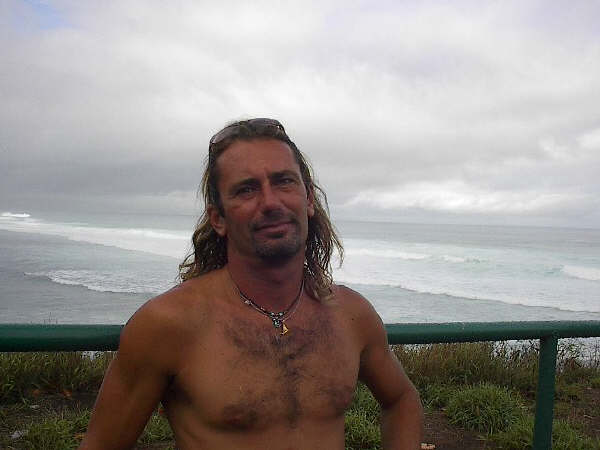Once again, I picked the photo that shows the biggest wave out of this gallery by Jimmie Hepp to show what was going on at Hookipa in the middle of the day.

But I don't like not having a surfing photo, so here's my coworker Russ in a sweet session we scored last week in the middle of the angular spreading swell.

Significant buoy readings 6am
NW
5.4ft @ 9s from 339° (NNW)
Waimea
2.2ft @ 9s from 350° (N)
Pauwela
4ft @ 8s from 61° (ENE)

Lanai
1.2ft @ 14s from 204° (SSW)
Still some background energy from the SSW at the Lanai buoy.
That's what that translates to in the webcam for the laziest of you who can't be bothered to check.
Webcams are obviously a great tool for choosing where to surf, as they give you a visual indication of size, consistency, wind and crowd at that particular spot. The Front Street cam was by far the website I checked the most on my phone during last week. Normally it's the Surfline buoys.

Current wind map shows a few fetches in the north Pacific that will keep Hookipa from going flat. As you can see, nothing major, since the wind barbs are only green (12 to 16 knots), so they are going to send small, short period waves.
You definitely want to see some red in the fetch (20+ knots) before you get excited.
Down south there's a fetch with some red, but it's way more far away and it's shooting east of us so we'll have to rely on the angular spreading again.
Real quick, here's a list of characteristics that a fetch needs to have to generate a big swell:
- strong wind
- wide
- long
- close to the target, but not too close
- aiming straight to the target
- captured (moving towards the target at the same speed of the waves it's generating)
Each single one of those factors helps the wave generation and when they happen all together (and they do occasionally in winter), that's when the surf gets in the giant category.

MC2km map at noon shows medium/strong trades.










No comments:
Post a Comment